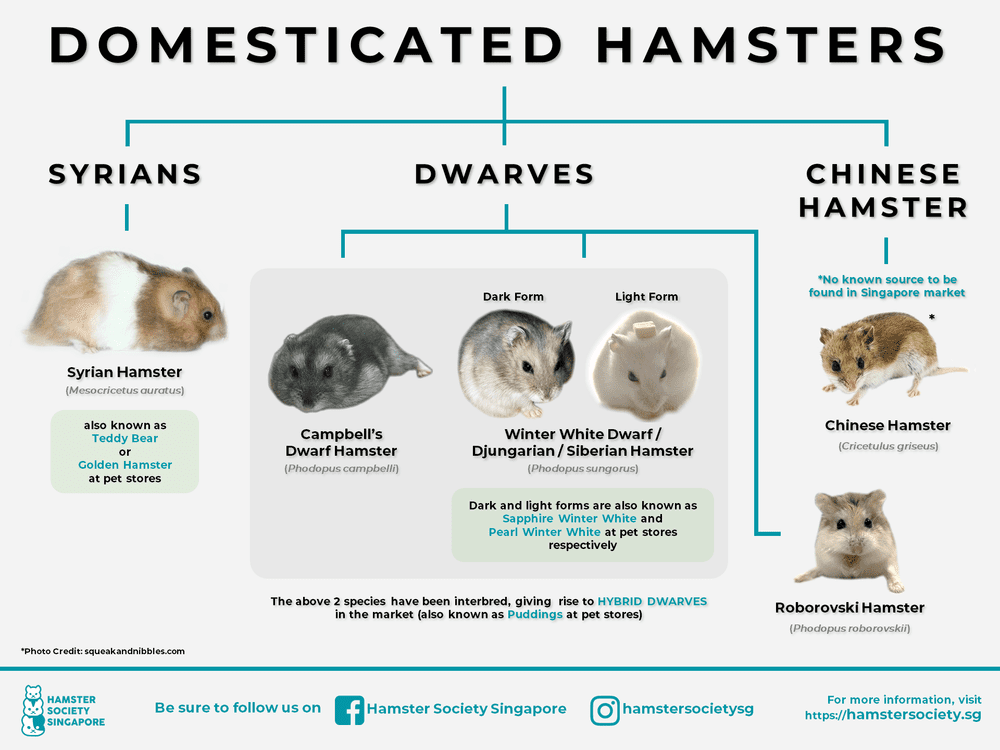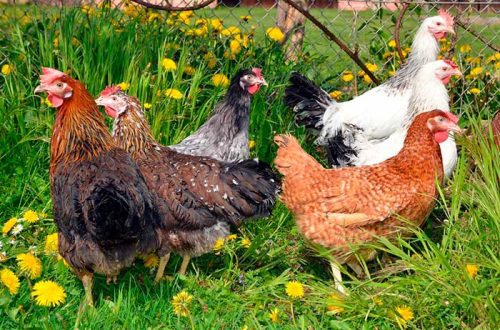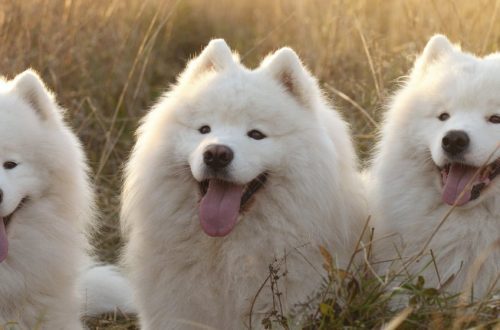
Features of the Campbell hamster breed – how to choose the right pet?
Campbell’s dwarf hamster will give its owners joy and a lot of positive emotions from communicating with a living bundle of happiness. This cute funny and fluffy rodent charges everyone around with positive emotional energy. In addition, this breed of hamsters is unpretentious in terms of maintenance.
Campbell’s Hamsters Present family of pygmy rodents. Outwardly, they are similar to the Dzungarian relatives, but at the same time they have individual distinctive features. Campbell’s hamsters have miniature ears and brown fur with a golden tint, in contrast to the Dzungarian relatives, whose color is dominated by light colors.
But at the same time, both breeds have a common distinctive feature – a dark stripe on the back and a light, almost white belly. Campbell’s hamster does not have fur on the soles of its paws, and it can change its color depending on the temperature in the rodent’s habitat.
An important distinguishing feature of Campbell’s hamsters isI difficulty taming a rodent. The animal is not given in the hands and can bite strongly. At the same time, he will not look that this is his master, who takes care of him. If it is decided to keep several animals in one cage, then in no case should they be left unattended for a long time, since their fights can reach the death of one of the pets.
But do not think that Campbell’s hamsters are not suitable for keeping at home. You just need to devote enough time to your pet, then his adaptation in a new place will be quick and painless. The animal will quickly get used to the owners and bring them a lot of positive emotions.
Contents
Unique features of the hamster breed
Campbell’s hamsters are representatives of dwarf rodents. The breed got its name in honor of Mr Campbell, who back in 1904, being a member of the British Consulate in China, discovered animal samples on the border of Russia and China.
Often the Campbell breed can be confused with the Dzungarian rodents, as they have a similar color and a dark stripe on the back. The wool is dyed brown tones with sandy tints or amber. A pronounced stripe of dark color runs through the entire back along the ridge. In turn, the abdomen of the animal is light and is separated from the back by dark stripes of curved shapes.
As mentioned earlier, the hamster does not have fur on its paws, and in winter, the animal does not change its fur coat. Campbell’s average hamster can live up to 2 years. In this case, the color of the undercoat is classified into the following types:
- agouti – a color in which the upper part of the coat gradually brightens closer to the ends, and a dark stripe on the back separates it from the tummy with lateral lines;
- monochromatic coloring, which is the same on either side, while there is no stripe on the back, but spots of a light shade on the tummy and chest are possible.
The fur is located at a certain angle, upright, forming shreds. Campbell’s hamster – has a slight weighing no more than 50 gr. and miniature sizes less than 10 cm, as well as a muzzle tapering at the end and miniature ears. The eyes of the animal are red, while the females are slightly smaller than the males. All animals have a skittish disposition and can often bite. But if the issue of raising a pet is approached with all responsibility, then it will turn into the sweetest affectionate creature.
Features of the care and maintenance of the breed
Due to the fact that the animal is quite small, its content is possible in an aquarium or a small cage. If the hamsters are kept by the whole family, then you need to worry about a spacious cage, otherwise constant quarrels and fights between rodents cannot be avoided. On the bottom of the cage, sawdust or special ready-made fillers are usually spread, which are available in any pet store. Thanks to this bedding, you can avoid the not-so-pleasant smells of hamsters. In addition to this, there are other rules for keeping animals.
- It is necessary at least occasionally to let the animal out of the cage so that it runs around the floor.
- The cage should stand in a well-lit place, but away from direct sun and artificial heat sources, and especially drafts.
- You need to feed the hamster with specialized feed mixtures from grain products: dried corn, nuts, peas, pumpkin and sunflower seeds.
- The daily diet of a pet must include fruits other than citrus fruits and vegetables, with the exception of onions, potatoes, garlic or zucchini. It is better to enrich the top dressing with herbs, dill, parsley, clover or lettuce. You can pamper the animal with dried fruits and biscuit cookies.
- The cage must be equipped with a special drinking bowl, in which it is necessary to constantly change the water. It is important to hang a stone made of minerals that will be needed in order for the animal to grind its teeth, enriching the body with essential minerals.
- In order for the hamster to grow up healthy, it is important to add grass granules to the food, as well as a vitamin and mineral complex.
Campbell’s hamster is an animalleading the nightlife, and therefore can interfere with the owners with their run and noise. For this reason, it is better to place the cage at a sufficient distance from the children’s room.
Features of choosing pets
In the process of choosing a favorite pet, it is important take into account some nuances:
- when acquiring a rodent in a pet store, you should not blindly trust everything that the seller tells – often he is committed, unfamiliar with the characteristics of the breed and can sell instead of Campbell’s hamster – a Dzungarian rodent;
- at first, you need to feed the rodent only with the food that the animal ate in the pet store, and then gradually transfer to homemade food;
- do not take the word of the seller that Campbell’s hamster will fit even too small a cage – the house for the animal should be spacious and comfortable enough;
- in addition to a spacious cage, you need to purchase a drinking bowl, a feeder and pour sawdust on the bottom.
Bringing a hamster home from the store, you should not immediately pick it up, it is important to let the animal get used to the new environment and unusual aromas.
Features of reproduction
Campbell’s hamsters breed from the first month of spring until mid September.
- During the spring-autumn season, females bring litter up to 4 times.
- The duration of pregnancy is from 2 to 21 days.
- In cubs, fur grows by the 5th day after birth, and by the 10th day, the eyes open.
- At one time, the female can bring up to 8 cubs.
- Male rodents become sexually mature at 6-8 weeks of age, females a few weeks later.
- Often breeding, perhaps in the first year of a hamster’s life.
The uniqueness of the nature of the breed
Campbell’s hamsters are lovely petbut it’s not always easy to make friends with him. First of all, this is due to the nocturnal lifestyle of the rodent. With the onset of twilight, he begins to lead an active lifestyle, and in the morning he hides in a cozy nest. Although most animals delight their owners every morning and evening. Also, the problems of establishing contact with a hamster may arise due to the nature of the pet.
Almost all hamsters do not like to sit on their hands, at such moments they can bite their owner, thereby protecting themselves. Breeders who are already well acquainted with their pets take them out of the cage with gloves on. After the animal is in the hands of a person, it becomes calm and affectionate.
How to distinguish between Campbell’s hamster and jungarik?
Campbell’s hamster looks very similar on his Dzungarian relative. However, these are absolutely two different species at the genetic level. Under natural conditions, they live in different regions: Campbell’s hamster has chosen Tuva, Altai and the northeastern province of China. Dzungarian rodents, in turn, liked Central Asia, South Siberia, Northeast Kazakhstan and Mongolia. Basically, hamsters are distinguished by color and stripe on the back.
In the CIS, the Dzungarian hamster of a standard color has received the maximum distribution, but you can meet rodents with pearl, sapphire and tangerine tint of the skin. Most Djungarian hamsters have black eyes. In turn, Campbell’s rodent is a red-eyed animal. You can often meet albino hamsters and even black individuals with light spots.
Hamster owners may confuse normal-colored Campbells with Djungarian hamsters. But still they have individual distinctive features. The common Campbell’s hamster has a gray-brown coat with an amber tint on the sides, while the Djungarian rodents look a little lighter.
Both types of hamsters have a pronounced line along the entire back, which in the Djungarian hamster begins to expand closer to the head, turning into a rhombus in shape. In turn, Campbell’s hamster has a stripe that is the same both along the entire back and on the head.





